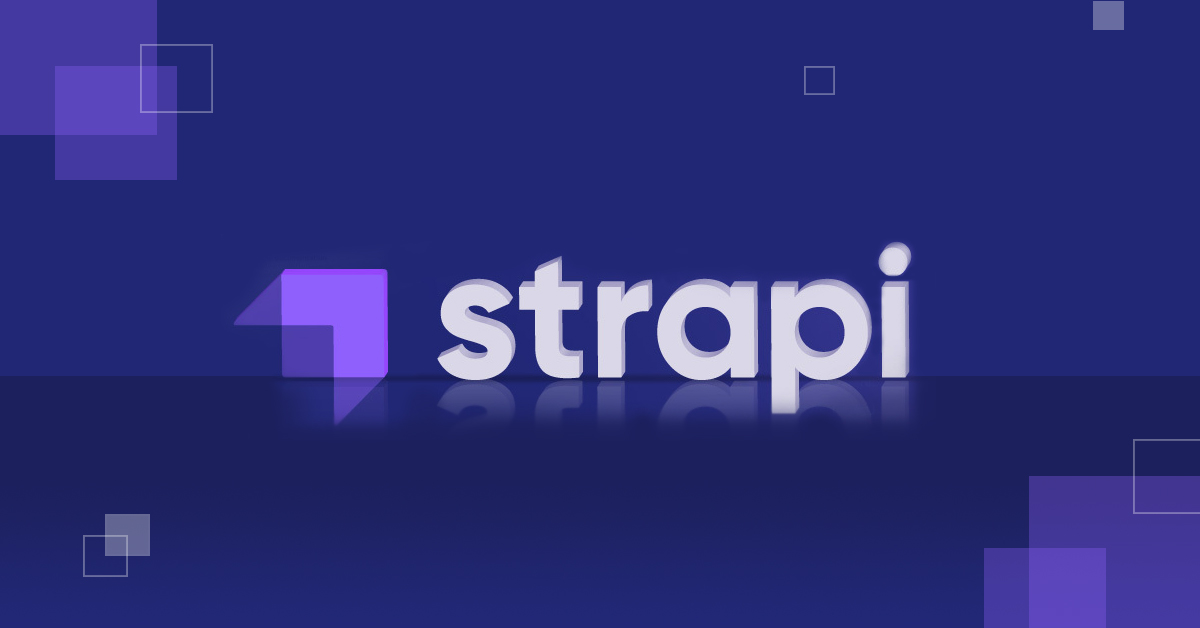Strapi is an open-source Node.js based content management system (CMS) built to empower developers and content editors alike. It enables fast, secure, and flexible development of websites and applications with efficient data management capabilities. Strapi offers a wide range of advantages for your projects including easy integration into existing architectures, customization options for advanced developers, custom plugins that can be tailored to any project needs, live preview feature for quick changes in content structure and much more. With its simple yet powerful user interface it provides the perfect platform for both experienced professionals as well as beginners learning how to build their own platforms from scratch.
What is Strapi?
Strapi is an open-source headless CMS (Content Management System) that allows developers to easily build and manage their content-rich websites and applications. Unlike traditional CMS platforms, Strapi follows a decoupled architecture, separating the frontend from the backend.
With Strapi, you have full control over your data structures and can create custom APIs for different types of content. Whether it’s blog posts, product catalogs, or user profiles, Strapi lets you define your own components and relationships between them.
Key Features of Strapi
Strapi is a powerful open-source headless CMS that comes with a range of impressive features. Let’s explore some of its key highlights.
First and foremost, Strapi offers an intuitive and user-friendly admin panel. With its drag-and-drop interface, managing content becomes a breeze. You don’t need any technical expertise to get started.
Another standout feature is the ability to create custom APIs effortlessly. With just a few clicks, you can define your own API endpoints and data structures according to your project requirements. This flexibility allows for easy integration with any front-end framework or technology stack.
Strapi also provides robust security measures such as authentication and role-based access control (RBAC). You can easily manage user permissions and ensure that only authorized individuals have access to certain content or functionalities.
Additionally, Strapi supports multi-language support out of the box, making it ideal for projects targeting global audiences. You can easily translate your content into multiple languages without the need for complex configurations.
Moreover, Strapi has built-in GraphQL support which enables efficient querying and fetching of data from the server. This improves performance by reducing unnecessary network requests.
These are just some of the many powerful features that make Strapi an excellent choice for your projects. Its flexibility, ease-of-use, security measures, multi-language support, and GraphQL capabilities set it apart from other CMS options in the market today!
Advantages of Using Strapi
- Flexible Content Management: One of the major advantages of using Strapi is its flexibility in content management. With Strapi, you have complete control over your data structure, allowing you to define custom fields and relationships between different content types easily. This means that you can tailor your CMS to fit the specific needs of your project without any limitations.
- Headless Architecture: Strapi follows a headless architecture, which separates the frontend from the backend. This allows developers to build their frontends using any technology or framework they prefer, such as React, Angular, or Vue.js. It gives them more freedom and flexibility in designing user interfaces while still benefiting from the powerful backend capabilities provided by Strapi.
- Easy API Creation: Another advantage of using Strapi is its ability to generate APIs automatically based on your defined content types. This saves significant development time as it eliminates the need for writing boilerplate code for CRUD operations on your data. You can focus more on building features and functionalities rather than spending time on repetitive tasks.
- Scalability: As your projects grow and demand increases, scalability becomes crucial. Thankfully, with Strapi’s modular architecture and support for horizontal scaling across multiple instances or servers, handling high traffic loads becomes seamless.
Comparing Strapi with Other Content Management Systems
When it comes to content management systems (CMS), there are several options available in the market. However, one CMS that stands out from the rest is Strapi. Let’s take a closer look at how Strapi compares to other CMS platforms.
Unlike traditional CMS systems that have predefined structures and limitations, Strapi offers unparalleled flexibility. With its headless architecture, developers can easily customize and adapt their content models according to their specific needs.
Strapi focuses on providing an exceptional developer experience. Its intuitive user interface allows developers to create APIs effortlessly and efficiently. Additionally, its extensive plugin ecosystem makes it easy to integrate with other tools and services.
Furthermore, when compared to other popular CMS platforms like WordPress or Drupal, Strapi excels in terms of scalability and performance. Thanks to its lightweight nature and efficient caching mechanisms, websites built with Strapi can handle high traffic loads without any compromises on speed or reliability.
Another advantage of using Strapi is its seamless integration with various databases such as MongoDB or PostgreSQL. This ensures that you have complete control over your data storage while still benefiting from the ease-of-use provided by a modern CMS.
One of the standout features of Strapi is its powerful API capabilities. With just a few clicks, developers can generate robust RESTful or GraphQL APIs for their projects without writing complex code manually.
Get Frontend Development Services for Quick Development
Getting Started with Strapi
Getting started with Strapi is a straightforward process that allows you to quickly set up and configure your project. Whether you’re a beginner or an experienced developer, Strapi’s user-friendly interface makes it easy for anyone to get up and running in no time.
To start using Strapi, the first step is to install the software on your local machine. You can do this by downloading the installation package from their website and following the step-by-step instructions. Once installed, you’ll have access to a powerful content management system that enables you to create custom APIs for your projects.
The next step is to create your first project in Strapi. This involves defining your content types, which act as templates for organizing and structuring your data. With Strapi’s intuitive interface, you can easily define fields such as text, images, dates, and more, giving you complete control over how your data is stored and displayed.
Once you’ve created your content types, it’s time to start creating entries within those types. This could be anything from blog posts and products to user profiles or events. Again, Strapi simplifies this process by providing a user-friendly editor where you can input all of the necessary information for each entry.
After creating your entries, you can then use Strapi’s API capabilities to fetch that data into any frontend framework or application of your choice. With its RESTful API architecture and GraphQL support out-of-the-box, integrating with other tools becomes seamless.
Conclusion
Strapi, as a headless CMS, has carved out a niche for itself in the vast world of web development. Its flexibility in content structuring, coupled with the freedom it offers developers to choose their front-end tools, makes it a compelling choice for projects both big and small. Moreover, its open-source nature ensures continuous improvements and adaptability. Whether you’re looking for an efficient way to manage content, streamline development processes, or want a scalable solution, Strapi stands as a formidable contender. In a landscape where adaptability and efficiency reign supreme, Strapi certainly holds its ground as a go-to choice for many modern developers.
FAQs
Strapi is a headless CMS that can be used to create and manage content for a variety of applications. It is a backend-only CMS, which means that it does not have a built-in frontend.
Yes, Strapi is a backend. It is a headless CMS, which means that it does not have a built-in frontend. However, it can be used to create and manage content for a variety of applications.
Yes, Strapi is free to use for personal and commercial projects. There is a paid plan that offers additional features, such as more storage space and support.
Strapi is written in JavaScript. It uses Node.js and Express.js as its runtime environment.
Yes, Strapi is a REST API. This means that it exposes its content and data through a set of HTTP endpoints. This makes it easy to integrate Strapi with other applications and services.
Strapi has a number of advantages, including:
-It is open source and free to use.
-It is easy to learn and use.
-It is highly customizable.
-It is scalable and can be used to build large applications.
-It is well-documented and has a large community of developers.







